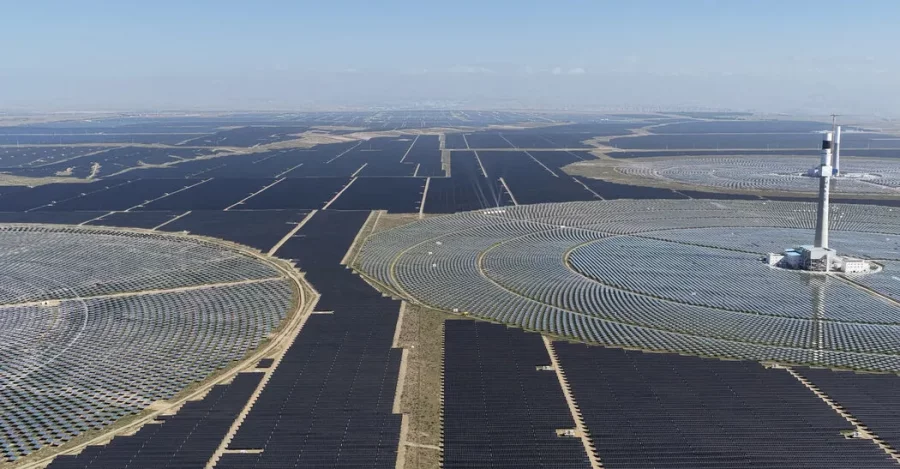China has commissioned the world's largest solar power plant, which covers an area of 420 square kilometers. Its capacity reaches almost 17 thousand megawatts.
This was reported by The New York Times.
The Chinese renewable energy project called Talatan Solar Park is located in Qinghai Province. The region has a sunny and arid climate, which, according to experts, was the reason for the construction of a solar power plant in this area. Within 3 years, the investors plan to increase the plant's area by another 10 times.
In addition to solar panels, the plant installed
- 4700 MW of wind turbine capacity;
- 7300 MW of hydroelectric power plant capacity.
In particular, the power plant has high-voltage lines that transmit energy for more than 1600 km to the industrial regions of China.
China's ambitions in renewable energy investment
While China still burns more coal than the rest of the world, the Chinese government has announced a new course to reduce greenhouse gas emissions and increase the amount of green energy sixfold over the coming years.
China has set itself the goal of completely abandoning imported coal, oil, and gas. The country already provides clean energy for 30,000 kilometers of high-speed railways and millions of electric vehicles, securing its role as a leader in the global transition to renewable energy.
In particular, the construction of new hydroelectric power plants on the Yangtze and Yarlung Tsangpo rivers allows China to balance energy production. After all, the country uses solar power during the day and wind or hydroelectric power at night.
Two such stations are being built next to Talatan Solar Park. During the day, excess electricity is used to lift water into reservoirs, and at night it falls down, turning the turbines of hydroelectric power plants, generating additional electricity.
In August, the total volume of trading on the carbon rights market in China amounted to approximately 48 billion yuan (about $6.6 billion).
However, according to the report, the carbon intensity of the country's electricity sector in 2024 decreased by 10.8 percent compared to 2018. China has also committed to reaching a peak in carbon emissions by 2030 and carbon neutrality by 2060.





